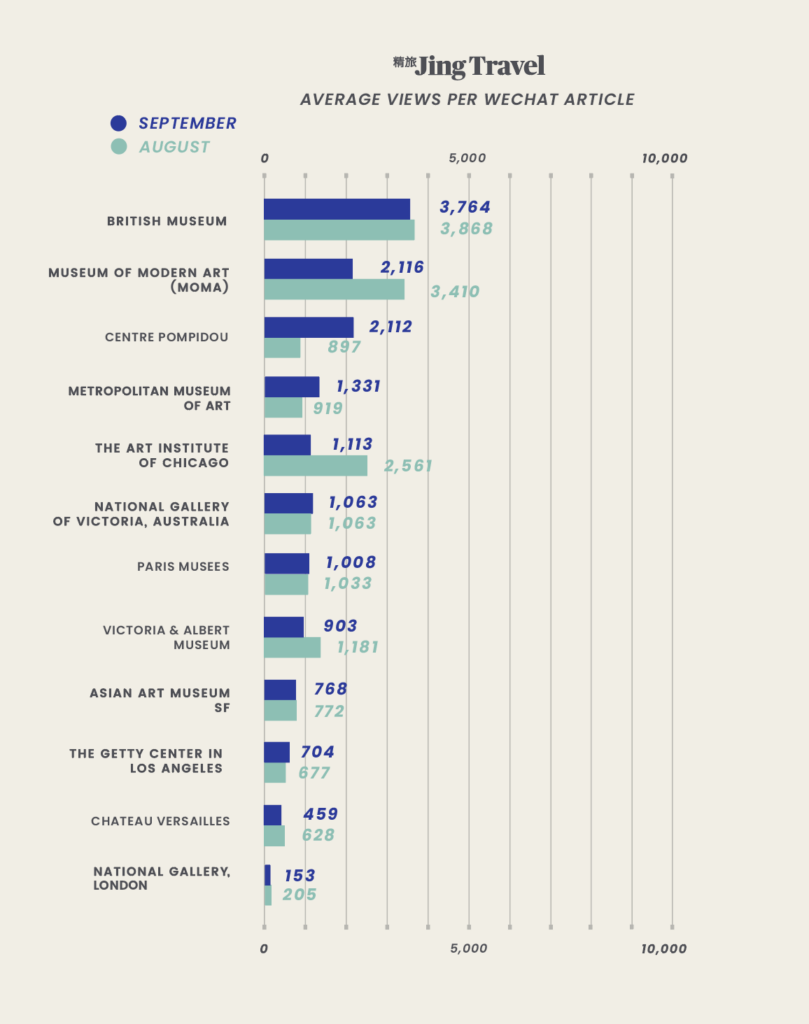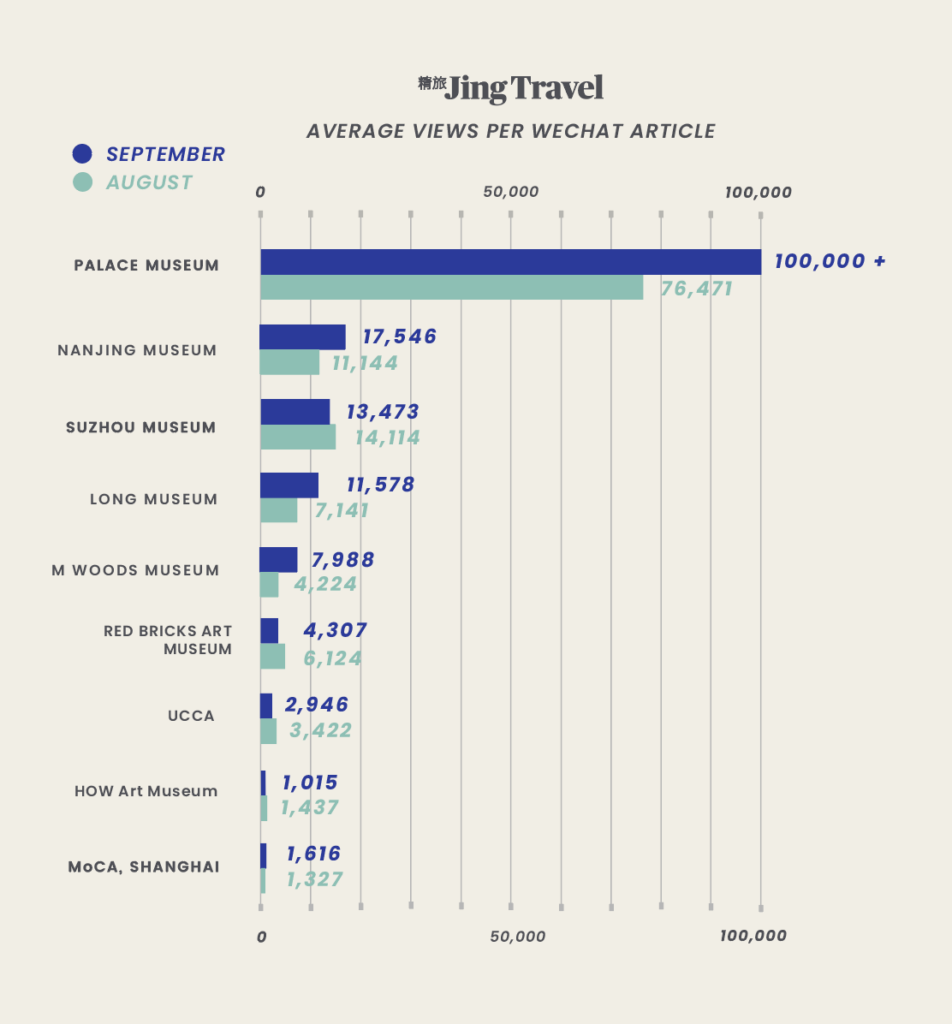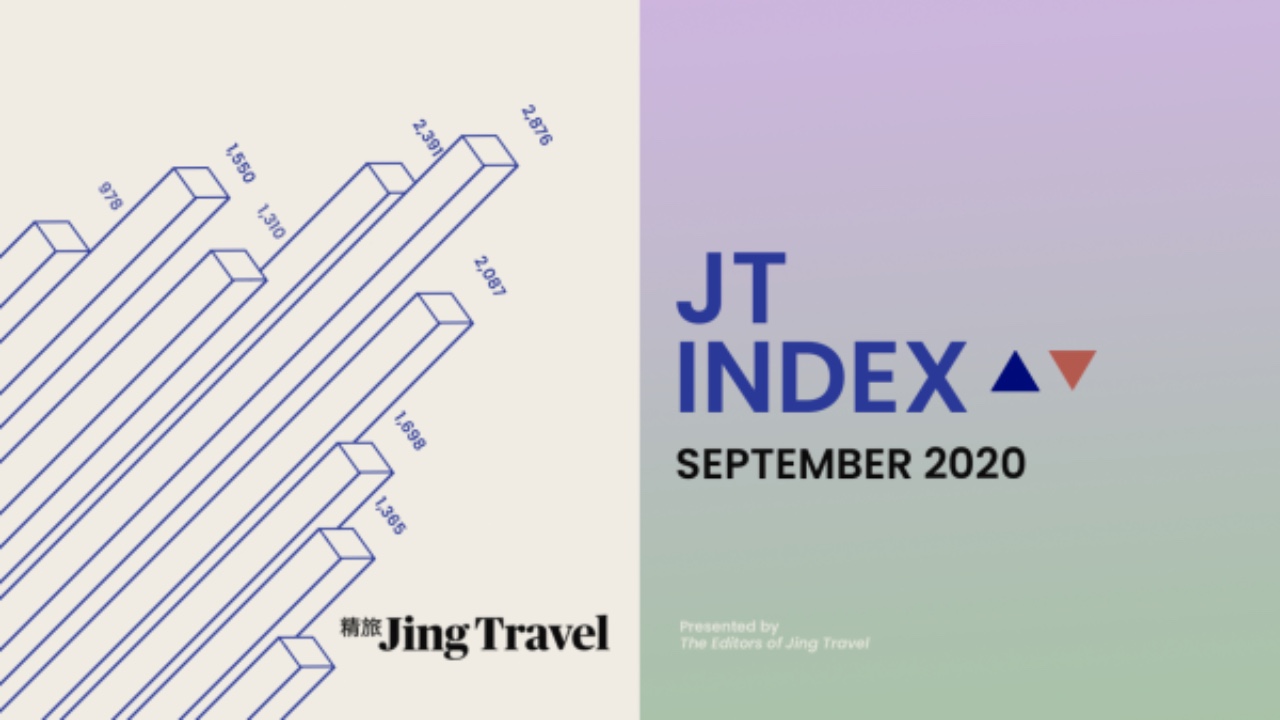With more than a billion daily users, WeChat is an essential tool for cultural destinations striving to connect with China. The vast majority of Chinese museums are already well-established on WeChat, but there remains huge potential for western institutions to utilize the platform to engage Chinese audiences. Jing Travel examines how cultural institutions performed on WeChat across September and looks behind the numbers by giving insight on successful strategies.
Western Museums and Cultural Institutions
The escalating tech-war waged by the Trump Administration on Chinese social media platforms may not have reached its conclusion, but it has forced U.S. cultural institutions, and by extension those beyond, to reassess their audience engagement tools. For organizations with limited resources and staffing WeChat has been the go-to resource to connect with China and a full ban would severely hamper their ability to do so, as well as the experience of such visitors when, indeed, they return.
In TikTok’s case, the short-video app remains underutilized by cultural institutions despite it potentially being a highly suitable platform to project playful creativity and connect with younger audiences. The demographic of a TikTok user is steadily rising and should the Oracle/Walmart deal receive full approval, it’s a platform cultural organizations would be wise to consider.

V&A
London’s premier museum for art and design has long prided itself on meticulous product creation and crafting an enviable gift shop. Since partnering with Alfilo Brands, a Shanghai-based master licensee and retailer, the V&A has extended this reputation to China by responding to the specific tastes of consumers and offering products on e-commerce platform Tmall. This attentiveness was on display in the most recent line of products advertised by the V&A in anticipation of the eight-day Golden Week vacation. It starts with the museum using Chinese models to present products and continues through their selection of vintage headgear, AirPod and laptop cases, and accessories that are both practical and smart in their use of museum intellectual property.
Chinese Museums and Cultural Institutions
Back in May, China’s Labor Day vacation offered the first glimmers of a domestic tourism revival. A month later, with the country’s COVID-19 situation further stabilized, the Dragon Boat Festival evidenced growing consumer willingness to travel. Now, October’s extended eight-day Golden Week promises to deliver a full return.
After months of laying low, China’s online travel agencies are reporting a surge in bookings; Alibaba’s Fliggy showed hotel bookings in mid-September surpassed those from a year ago, Qunar announced popular flights had sold out, and Ctrip.com predicts in excess of 600 million trips (down from 780 million in 2019). Welcome news for an industry that has suffered more than most in 2020.

Palace Museum
At the end of 2019, Beijing’s Forbidden City announced elaborate plans to celebrate its 600 anniversary — including large-scale exhibitions, the issuing of commemorative coins, and the launch of a pop up restaurant serving “Imperial family” banquets. These were laid low as COVID-19 swept the country in late January, but with the virus largely under control the former Imperial is receiving renewed attention ahead of October’s Golden Week holiday. Having gradually increased capacity since reopening in May, the Palace museum has sold its allotment of 80,000 tickets over the coming fortnight, welcome news in what has otherwise not been an auspicious year.
UCCA
In 2017, UCCA experienced the immense popularity of immersive exhibitions with Chinese Millennials and Gen Zers first-hand when former 798 Art District neighbor Pace Gallery hosted an exhibition of Japanese art collective teamLab — the exhibit caused a stir in the capital for its ticket price ($15) and endless lines. Less than a year later, teamLab’s “Art is Water” arrived at UCCA and the contemporary art museum has continued presenting immersive spaces ever since, most recently with the opening of its exhibition looking at computer art “Immaterial / Re-material”. Created alongside Canadian multimedia studio Moment Factory and Baidu, the display turns visitors into participants with the ability to impact artworks through gestures, sounds, and actions on a UCCA app. It promises to be a favorite selfie spot for young art enthusiasts in the capital.



